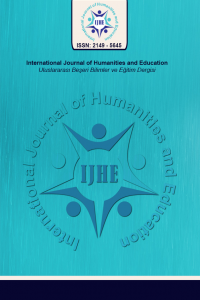A Substantive Model of Canadian Tenure-Track Experiences
This paper presents a substantive model derived from the experiences of faculty members during their years in tenure-track positions. The findings arose from the editorial development of contributed chapters to a book exploring tenure-track experiences and subsequent synthesis of the narrative accounts. Using a multiple case-study approach we were immersed in the development of individual chapters contributed by tenure-track professors in education faculties from across Canada. Collectively, the chapter authors had varying lengths of time in the tenure-track and had different backgrounds prior to joining the academy. The development of narratives considered multiple interpretations, but it was subsequent to the completion of the structural elements of the manuscript that a synthesis of the cross-case details led to the development of a substantive model of the tenure-track experience. The model uses self-determination theory and augments it with the Kubler-Ross model of grief.
Anahtar Kelimeler:
tenure-track, tenure model, tenure experiences, self-determination theory
A Substantive Model of Canadian Tenure-Track Experiences
This paper presents a substantive model derived from the experiences of faculty members during their years in tenure-track positions. The findings arose from the editorial development of contributed chapters to a book exploring tenure-track experiences and subsequent synthesis of the narrative accounts. Using a multiple case-study approach we were immersed in the development of individual chapters contributed by tenure-track professors in education faculties from across Canada. Collectively, the chapter authors had varying lengths of time in the tenure-track and had different backgrounds prior to joining the academy. The development of narratives considered multiple interpretations, but it was subsequent to the completion of the structural elements of the manuscript that a synthesis of the cross-case details led to the development of a substantive model of the tenure-track experience. The model uses self-determination theory and augments it with the Kubler-Ross model of grief.
___
- Author 1 & Author 2 (Eds.). (2017).
- Author 2, & Author 1 (2016, May).
- Acker, S., Webber, M., & Smyth, E. (2012). Tenure troubles and equity matters in Canadian academe. British Journal of Sociology of Education, 33(5), 743–761.
- American Association of University Professors. (1940/1970). 1940 statement of principles on academic freedom and tenure. Downloaded from https://www.aaup.org/report/1940-statement-principles-academic-freedom-and-tenure
- Broeck, A. V., Ferris, D. L., Chang, C. H., & Rosen, C. C. (2016). A review of self-determination theory's basic psychological needs at work. Journal of Management, 42(5), 1195–1229.
- Creswell, J.W. (2007). Qualitative inquiry & research design (2nd ed.). Thousand Oaks, CA: Sage Publications.
- Davies, B., & Bansel, P. (2010). Governmentality and academic work: shaping the hearts and minds of academic workers. Journal of Curriculum Theorizing, 26(3), 5–20.
- Deci, E. L., & Ryan, R. M. (2000). The ‘‘what’’ and ‘‘why’’ of goal pursuits: Human needs and the self-determination of behavior. Psychological Inquiry, 11(4), 227–268.
- Denzin, N.K., & Lincoln, Y.S. (2013). Strategies of qualitative inquiry. Thousand Oaks, CA: Sage.
- Flaherty, C., (2017). Legislation in two states seeks to eliminate tenure in public higher education. Inside Higher Ed. Jan. 13. Retrieved from https://www.insidehighered.com/news/2017/01/13/legislation-two-states-seeks-eliminate-tenure-public-higher-education
- Franz, N. (2016). A holistic model of engaged scholarship: Telling the story across higher education's missions. Journal of Higher Education Outreach and Engagement, 20(1), 197–216.
- Gardner, S.K., & Veliz, D. (2014). Evincing the ratchet: A thematic analysis of the promotion and tenure guidelines at a striving university. The Review of Higher Education, 38(1), 105–132.
- Gibbs, P. (2014). The phenomenology of professional practice: a currere. Studies in Continuing Education, 36(2), 147–159. Doi: 10.1080/0158037X.2013.825765
- Gorichanaz, T., & Latham, K.F. (2016). Document phenomenology: A framework for holistic analysis. Journal of Documentation, 72(6), 1114–1133. Doi: 10.1108/JD-01-2016-0007
- Iyengar, S.S., & Lepper, M.R. (2002). Choice and its consequences: On the costs and benefits of self-determination. In A. Tesser, D.A. Stapel, & J.V. Wood (Eds.), Self and motivation: Emerging psychological perspectives. Washington, DC: American Psychological Association.
- Jones, B., Hwang, E., & Bustamante, R.M. (2015). African American female professors' strategies for successful attainment of tenure and promotion at predominately white institutions: It can happen. Education, Citizenship and Social Justice, 10(2), 133-151.
- Kawalilak, C., & Groen, J. (Eds.). (2010). Perspectives – The road to tenure. Journal of Educational Thought, 44(1), 5–9.
- Kubler-Ross, E., & Kessler, D. (2005). On grief and grieving: Finding the meaning of grief through the five stages of loss. New York, NY: Scribner.
- Levy-Warren, M.H. (1987). Moving to a new culture: Cultural identity, loss, and mourning. In J. Bloom-Feshbach & S. Bloom-Feshbach (Eds.), The psychology of separation and loss. San Francisco, CA: Jossey-Bass Inc.
- Merriam, S.B. (2009). Qualitative research: A guide to design and implementation. San Francisco, CA: Jossey-Bass Inc.
- Ragoonaden, K. (2015). Professor of teaching: The quest for equity and parity. Canadian Journal of Education, 38(3), 1-16.
- Ryan, R.M., & Deci, E. L. (2000). Self-determination theory and the facilitation of intrinsic motivation, social development, and well-being. American Psychologist, 55(1), 68–78.
- Walton, G. (2017). Academic underperformers must be called out. University Affairs, 58(2), 41.
- Başlangıç: 2015
- Yayıncı: Halil TURGUT
Sayıdaki Diğer Makaleler
Description of The Termez Coin With An Arrow
Kırgızca ve Güney Sibirya Türk Lehçelerinde Ses Uyumunun Tipolojisi
Kübra BOZDOĞAN, Mehtap YILDIRIM
Azerbaycan'da ASAN Hizmetin Başarılı Bir Şekilde Uygulanmasının Faktörleri
Uyuşturucu Madde Kullanımı ve Suç İlişkisi
Fen Bilimleri Öğretmen Adaylarının Astronomiye Yönelik Tutumlarının Belirlenmesi
Geç Antik Çağ’da Phrygia’da Üretim Ve Ticaret
Sosyal Etkinlikler Modülüyle Öğrencilere Kazandırılan Değerler: Öğrenci Görüşleri
Sevda KOÇ AKRAN, Vildan YILDIZ
Açık ve Uzaktan Yabancı Dil Olarak Türkçe Öğreticileri için Temel İlkeler
